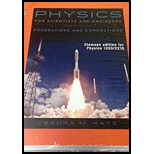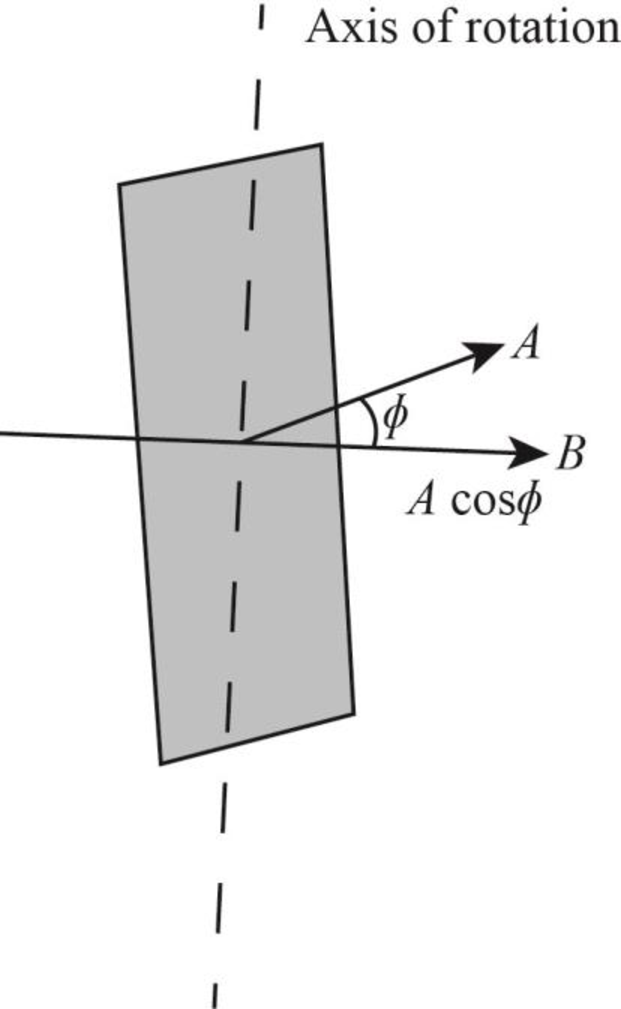
Concept explainers
Whether the coil being slightly off-axis explains the power loss.
Answer to Problem 70PQ
If the coil is off center, the coil produces less power. The coil can produce more power by increasing the angular speed or frequency of rotation.
Explanation of Solution
Write the expression for power generated by the coil.
Here,
Write the expression for rms value of emf.
Here,
Write the expression for rms value of current.
Here,
Substitute
Write the expression for peak value of emf.
Here,
Write the expression for peak value of current.
Here,
Substitute
Substitute
When the axis of rotation of the coil is at right angles to the direction of the magnetic field and to the area vector of the AC generator, the generator operates with peak efficiency.
The axis of rotation is no longer perpendicular to the area vector, if the coil is slightly off center.
The area vector is tilted at an angle

Figure-(1)
Write the expression for average power if the coil is off center.
Here,
Substitute
Compare equation (III) and equation (IV).
Therefore,
Therefore, the power coil would produce, if the coil is slightly off center would be less than the power produced when the axis of the coil is in the plane of the magnetic field.
Consider equation (IV).
The power can be restored to the previous value of
Therefore, if the coil is off center, the coil produces less power. The coil can produce more power by increasing its angular speed or frequency of rotation.
Want to see more full solutions like this?
Chapter 32 Solutions
Physics for Scientists and Engineers: Foundations and Connections

 Principles of Physics: A Calculus-Based TextPhysicsISBN:9781133104261Author:Raymond A. Serway, John W. JewettPublisher:Cengage Learning
Principles of Physics: A Calculus-Based TextPhysicsISBN:9781133104261Author:Raymond A. Serway, John W. JewettPublisher:Cengage Learning Physics for Scientists and Engineers: Foundations...PhysicsISBN:9781133939146Author:Katz, Debora M.Publisher:Cengage Learning
Physics for Scientists and Engineers: Foundations...PhysicsISBN:9781133939146Author:Katz, Debora M.Publisher:Cengage Learning College PhysicsPhysicsISBN:9781305952300Author:Raymond A. Serway, Chris VuillePublisher:Cengage Learning
College PhysicsPhysicsISBN:9781305952300Author:Raymond A. Serway, Chris VuillePublisher:Cengage Learning College PhysicsPhysicsISBN:9781285737027Author:Raymond A. Serway, Chris VuillePublisher:Cengage Learning
College PhysicsPhysicsISBN:9781285737027Author:Raymond A. Serway, Chris VuillePublisher:Cengage Learning Physics for Scientists and EngineersPhysicsISBN:9781337553278Author:Raymond A. Serway, John W. JewettPublisher:Cengage Learning
Physics for Scientists and EngineersPhysicsISBN:9781337553278Author:Raymond A. Serway, John W. JewettPublisher:Cengage Learning





